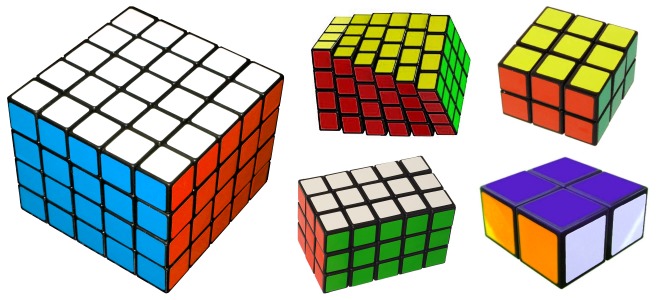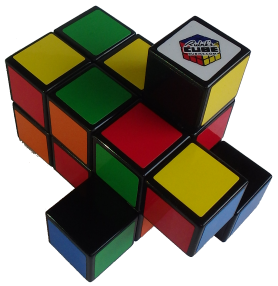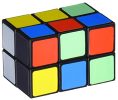Cuboid Twisty Puzzles
Rubik’s Cubes have shaped the way we think about problems in life, and have demonstrated that most problems and puzzles don’t always have the easiest solution, but they are always solvable. The original Rubik’s Cube received a lot of attention and fame in the 1980s, which led to the development of the 4x4x4 cube being marketed under the names Master Cube and Rubik’s Revenge. This eventually led to the Rubik’s Professor 5x5x5 cube, but puzzle designers already had everything they needed to take the twisty puzzle world to a new level – Cuboids.

The world’s first fully functional cuboid transformation was Tony Fisher’s 3x3x4 puzzle, made from a Rubik’s Revenge. This was Tony Fisher’s first of currently 12 fully functional cuboid puzzles, however this one is the most ground-breaking due to its implications on the world of twisty puzzle design, including the methods used by Fisher to create the extra pieces needed to utilize a currently existing mechanism.
Large NxNxN Cubes
Large order NxNxN Rubik's Cubes, ranging from 4x4x4 to the mass-produced 17x17x17 and beyond, up to the 34x34x34 and the 49x49x49, created in 2024, representing a captivating fusion of complexity and craftsmanship. Besides requiring more time to solve them, they don't really add anything to the complexity of the solution. If you can solve the even 4x4x4 and the odd 5x5x5 cubes, then theoretically you could complete any size, even the record-breaking 49x49x49.
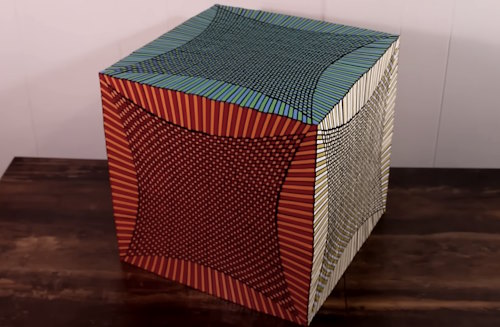
The 49x49x49 cube is currently the largetst NxNxN.
Shapeshifting
The majority of all cuboids are based on existing NxN mechanisms, and are fully functional (this means that each layer on each face functions as normal, and there are no restricted moves). There are several different types of cuboid design that all fall into one of the two categories:
- Shapeshifting Cuboids – Shapeshifting occurs in cuboids where the difference between the dimensions is such that certain moves cause the puzzle to change shape, regardless of whether the dimensions are odd or even. For example, a 3x3x5 cuboid. Usually the first step of solving a shapeshifting puzzle is returning to the cuboid shape, just like for the Square-1.
- Non-Shapeshifting Cuboids – Cuboids that cannot shapeshift (moves in one direction are half turns, as no quarter turns are permitted in the critical points). Non-Shapeshifting cuboids do not conform to the above rule.
Common Cuboid Shapes and Sizes
There are also a number of different cuboid shapes and sizes, some of which have collective groups:
- 2x2xN Cuboids – These cuboids (known as Tower Cuboids) are progressively taller tower-style puzzles that are very simple to solve due to their limited movement (regardless of the above shapeshifting rules, the shapeshift on a tower cuboid is very easy to fix so most the solve is standard).
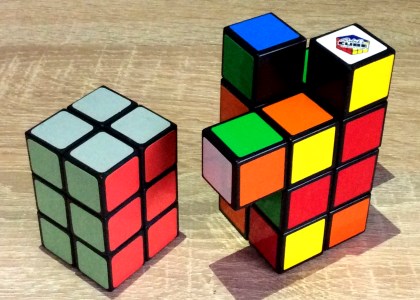
- 3x3xN Cuboids – Slightly more difficult alternatives to the tower cuboids, the 3x3xN cuboids are similar in shape and design except their two end faces are 3x3, not 2x2. Some popular examples include the 3x3x2 Domino Cube and 3x3x4.
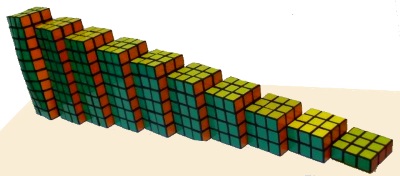
- NxNx1 Floppy Cuboids – These puzzles are only one layer thick, so are usually quite simple to solve.
- Non-Proportional Cuboids – Most cuboids are proportional i.e. their pieces are all the same size (like on standard NxNxN cubes), however non-proportional techniques are usually used to make much larger cuboids in a small amount of space (such as Oskar van Deventer’s 3x3x27 “Pancake Cube”, which is no larger than a standard Rubik’s Cube (picture each layer cut into 9 different layers). Many mass-produced cuboids, like the 3x3x5, also exhibit non-proportional characteristics.
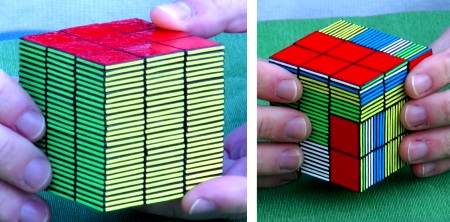
Pancake Cube available at shapeways.com
The largest non-NxNxN cuboid ever to be produced is the Traiphum's 10x10x8 but there's mass-produced 3x3x17 too. Most larger puzzles tend to have curved pieces that make them not necessarily rectangular, but almost as if the insides were bulging outwards. This design, along with the uniquely shaped pieces, is common for two reasons:
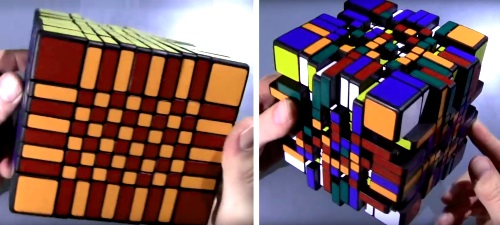
- Stability. The differently shaped pieces enhance the puzzle's overall stability and allow for larger cores in their construction (this is why the outward bulge appears to accommodate a larger, more cylindrical center).
- The looks. These cuboids appear more professional and well-designed compared to the entirely proportional, blocky shapes of simpler, smaller cuboids.
